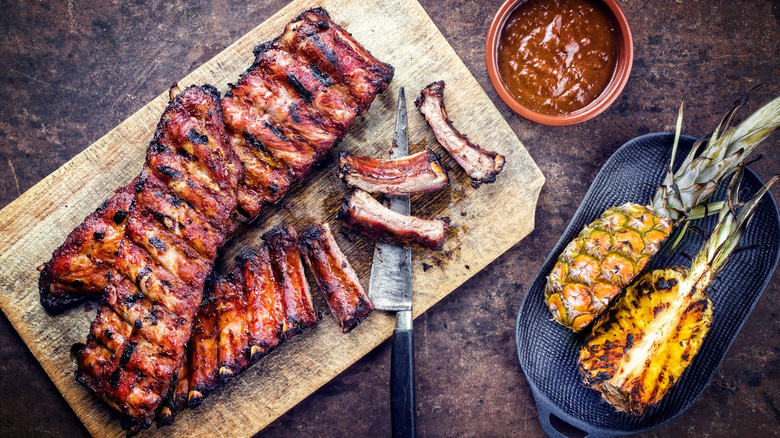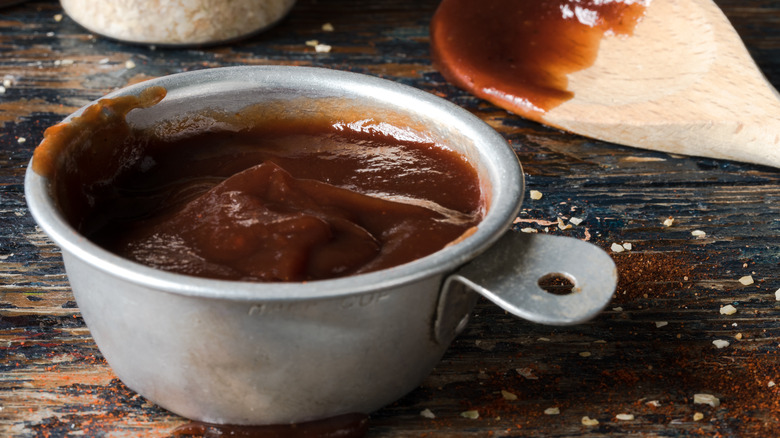What Is The Difference Between St. Louis And Kansas City BBQ Sauce?
One of the most beloved condiments to pair alongside a plate of pulled pork or tender brisket is a helping of BBQ sauce. Any true BBQ connoisseur can easily detect the differences and nuances of every state and city's unique take on BBQ. The differences between certain sauces and BBQ methods can be subtle for untrained taste buds. South Carolina is known for its mustard-based BBQ sauce while Memphis sticks to a dry rub (via Taste of Home). However, there's no denying that some of the most iconic BBQ sauces are two straight out of Missouri.
Missouri is home to two traditional styles of BBQ sauce from St. Louis and Kansas City, respectively. Though located in the same state, the two cities sit about 248 miles apart (via Google Maps), each having its own characteristics and BBQ sauces. While similar, the difference between the two sauces can satisfy either a sweet tooth or a savory craving.
What's your preference? Sweet Kansas City or Tangy St. Louis
When you think of the traditional BBQ sauce that you see in tiny containers at your favorite fast or local food joint, it's likely Kansas City-style. This locale's sauce includes ketchup or tomato sauce mixed with brown sugar or molasses (via Eater). While different BBQ restaurants have their spin on the Kansas City-style sauce, the base is still a thick and sweet tomato.
On the other side of the state sits St. Louis. This city adds one extra ingredient to Kansas City's sauce to elevate it from something sweet to one with a flavor that is a little more tangy and acidic. What is this super special ingredient? It's cider vinegar (via Memphis BBQ). Still honing in the base notes of tomato sweetened with brown sugar or molasses, the inclusion of cider vinegar into the sauce's mix changes the final flavor and consistency. Additionally, this sauce tends to run a tad thinner than its Kansas City counterpart.
Both Kansas City and St. Louis are world-famous for each's decadent and delicious BBQ sauce, making us lucky that we can choose our favorite for our next plate of ribs. Even better, you can pair the two together for the merriment of excellent flavor. It's time to expand your palette, try both, and see which style you prefer.

